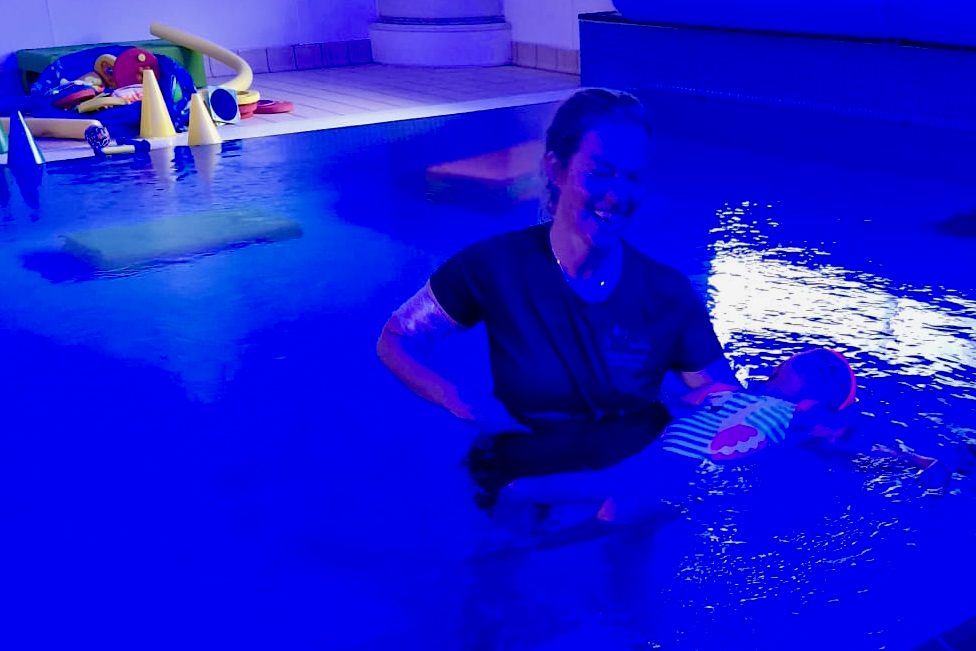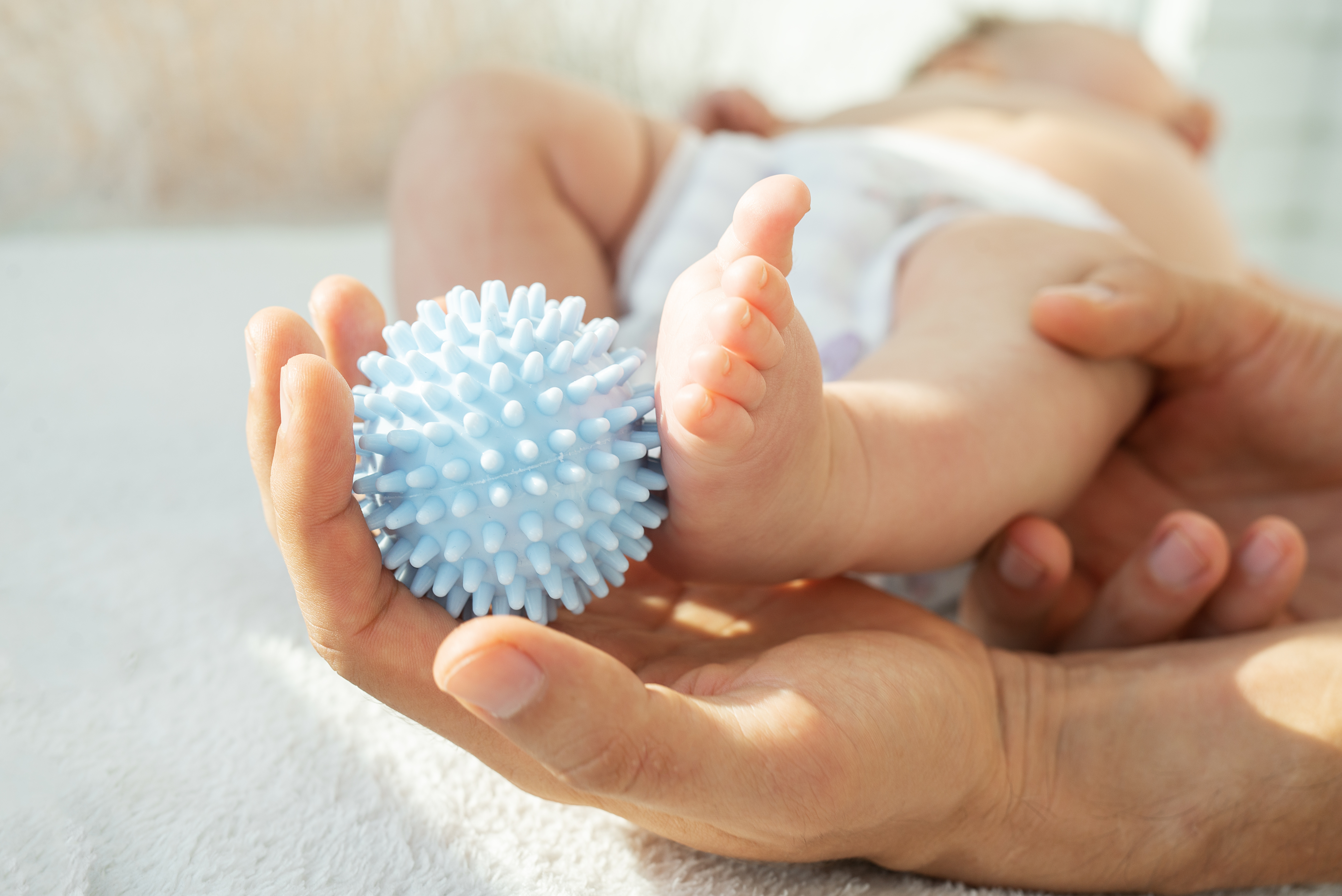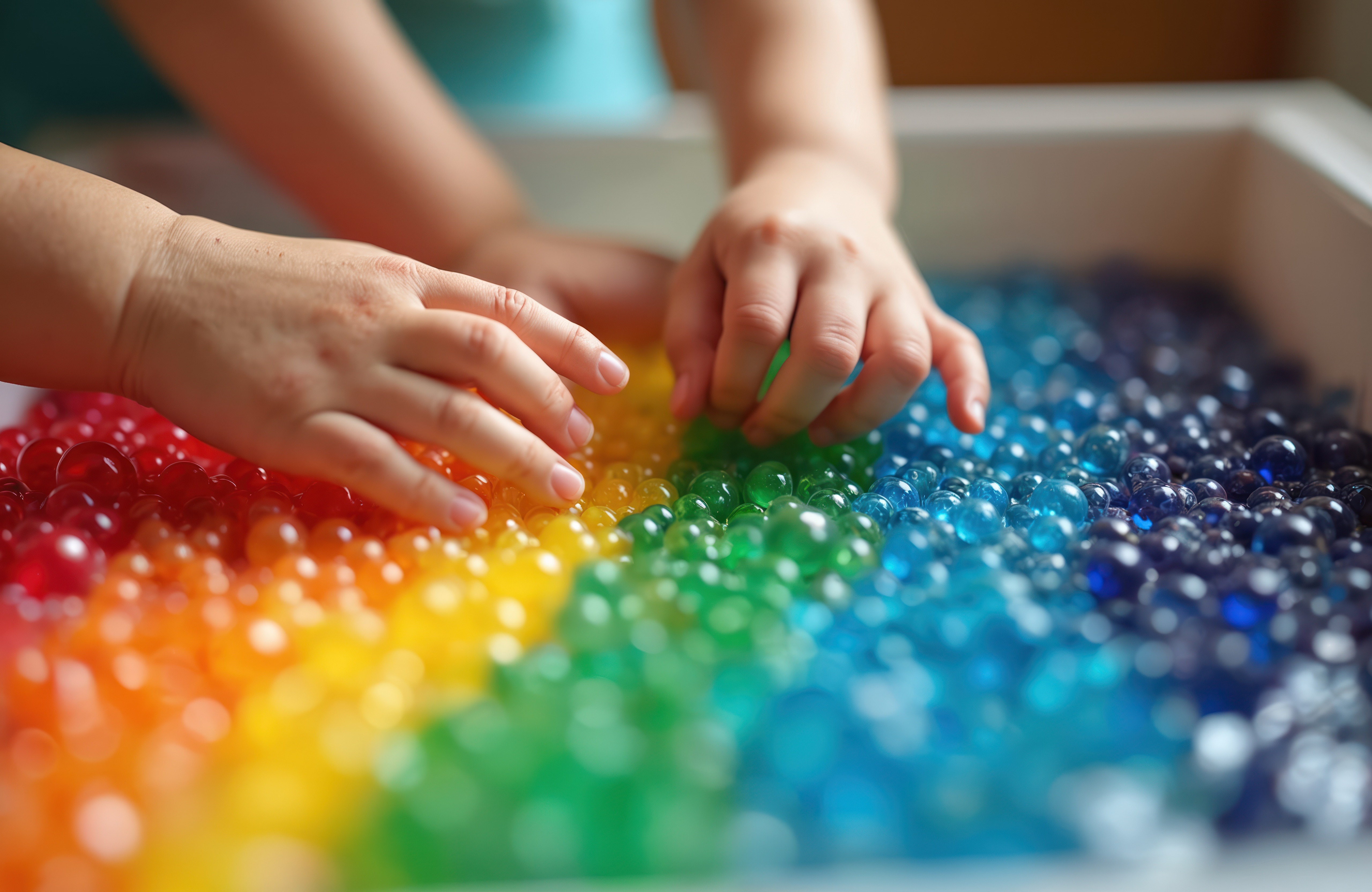Sensory approaches focus on supporting children who experience differences in the way they process sensory information. For children with neurological conditions such as cerebral palsy, acquired brain injury or autism, sensory processing can affect posture, movement, attention and participation in everyday life.
These include:
* Compression garments and lycra suits to provide deep pressure and alignment support,
* Elastic therapeutic taping to give additional sensory feedback and improve posture and movement awareness,
* Skin stimulation techniques such as tapping, stroking or deep pressure to increase body awareness and regulate tone
* Joint compression and proprioceptive play (pushing, pulling, weight-bearing) to strengthen muscles and enhance stability
* Vibration cushions and platforms to provide stimulating and motivating feedback
* Tactile and vestibular input, such as graded balance tasks and supported movement on different surfaces, to promote coordination and regulation
Sensory approaches are always introduced gradually, at the child’s pace, and integrated into play and everyday activities. The goal is not only to provide comfort and stability but also to create the right conditions for motor learning and functional skill development.
Who is it for?
Sensory approaches can benefit children with:
* Cerebral palsy
* Acquired brain injury
* Autism or sensory processing differences
* Developmental delay or coordination difficulties
They are particularly helpful when children struggle with body awareness, postural control, regulation, attention or participation in play and daily activities.
Potential benefits
* Improve postural stability and body alignment
* Enhance body awareness and confidence in movement
* Support regulation of tone, arousal and emotional state
* Provide sensory input to reduce involuntary movements and improve muscle activation
* Encourage better balance, coordination and motor planning
* Increase engagement, attention and focus during therapy and play
* Provide comfort and security for children with sensory sensitivities
* Support families with practical strategies to use at home, nursery or school
* Complement other therapy techniques such as electrical stimulation, postural care and early intervention programmes



